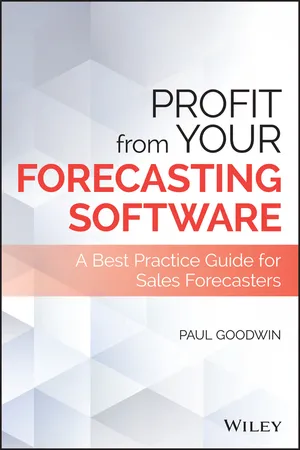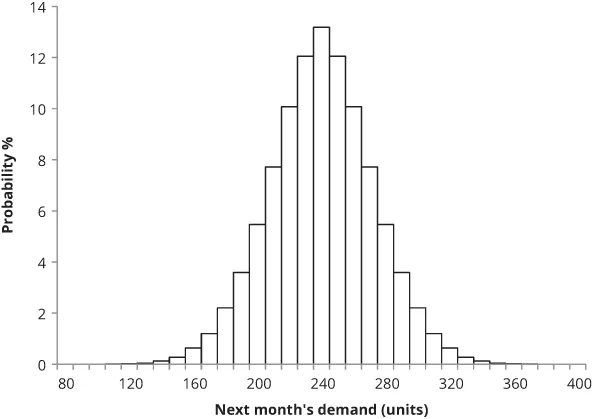
Profit From Your Forecasting Software
A Best Practice Guide for Sales Forecasters
- English
- ePUB (mobile friendly)
- Available on iOS & Android
About this book
Go beyond technique to master the difficult judgement calls of forecasting
A variety of software can be used effectively to achieve accurate forecasting, but no software can replace the essential human component. You may be new to forecasting, or you may have mastered the statistical theory behind the software's predictions, and even more advanced "power user" techniques for the software itself—but your forecasts will never reach peak accuracy unless you master the complex judgement calls that the software cannot make. Profit From Your Forecasting Software addresses the issues that arise regularly, and shows you how to make the correct decisions to get the most out of your software.
Taking a non-mathematical approach to the various forecasting models, the discussion covers common everyday decisions such as model choice, forecast adjustment, product hierarchies, safety stock levels, model fit, testing, and much more. Clear explanations help you better understand seasonal indices, smoothing coefficients, mean absolute percentage error, and r-squared, and an exploration of psychological biases provides insight into the decision to override the software's forecast. With a focus on choice, interpretation, and judgement, this book goes beyond the technical manuals to help you truly grasp the more intangible skills that lead to better accuracy.
- Explore the advantages and disadvantages of alternative forecasting methods in different situations
- Master the interpretation and evaluation of your software's output
- Learn the subconscious biases that could affect your judgement toward intervention
- Find expert guidance on testing, planning, and configuration to help you get the most out of your software
Relevant to sales forecasters, demand planners, and analysts across industries, Profit From Your Forecasting Software is the much sought-after "missing piece" in forecasting reference.
Frequently asked questions
- Essential is ideal for learners and professionals who enjoy exploring a wide range of subjects. Access the Essential Library with 800,000+ trusted titles and best-sellers across business, personal growth, and the humanities. Includes unlimited reading time and Standard Read Aloud voice.
- Complete: Perfect for advanced learners and researchers needing full, unrestricted access. Unlock 1.4M+ books across hundreds of subjects, including academic and specialized titles. The Complete Plan also includes advanced features like Premium Read Aloud and Research Assistant.
Please note we cannot support devices running on iOS 13 and Android 7 or earlier. Learn more about using the app.
Information
CHAPTER 1
Profit from Accurate Forecasting
1.1 THE IMPORTANCE OF DEMAND FORECASTING
1.2 WHEN IS A FORECAST NOT A FORECAST?
1.3 WAYS OF PRESENTING FORECASTS
1.3.1 Forecasts as Probability Distributions
| Next Month's Demand (Units) | Probability (%) |
| 20 to 29 | 5 |
| 30 to 39 | 30 |
| 40 to 49 | 41 |
| 50 to 59 | 10 |
| 60 to 69 | 8 |
| 70 to 79 | 5 |
| 80 to 89 | 1 |


1.3.2 Point Forecasts
1.3.3 Prediction Intervals
Table of contents
- Cover
- Title Page
- Table of Contents
- Acknowledgments
- Prologue
- CHAPTER 1: Profit from Accurate Forecasting
- CHAPTER 2: How Your Software Finds Patterns in Past Demand Data
- CHAPTER 3: Understanding Your Software's Bias and Accuracy Measures
- CHAPTER 4: Curve Fitting and Exponential Smoothing
- CHAPTER 5: Box-Jenkins ARIMA Models
- CHAPTER 6: Regression Models
- CHAPTER 7: Inventory Control, Aggregation, and Hierarchies
- CHAPTER 8: Automation and Choice
- CHAPTER 9: Judgmental Interventions: When Are They Appropriate?
- CHAPTER 10: New Product Forecasting
- CHAPTER 11: Summary: A Best Practice Blueprint for Using Your Software
- Index
- End User License Agreement